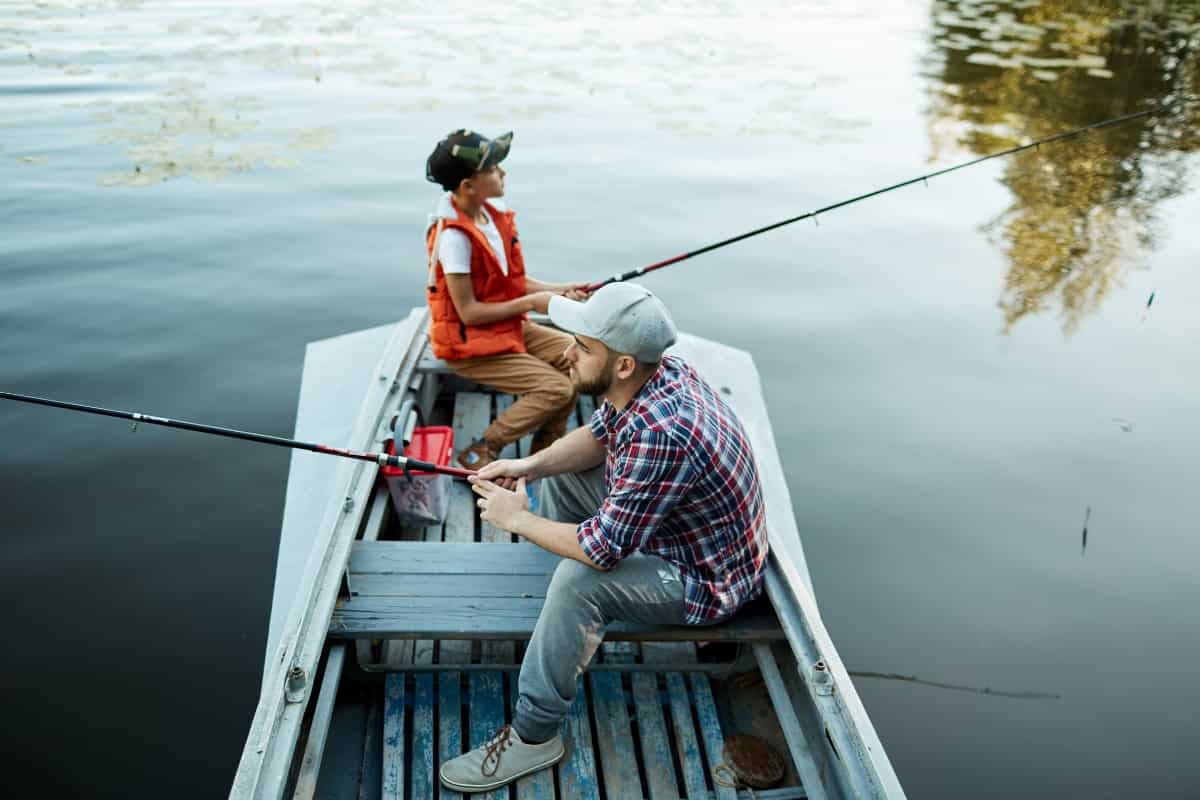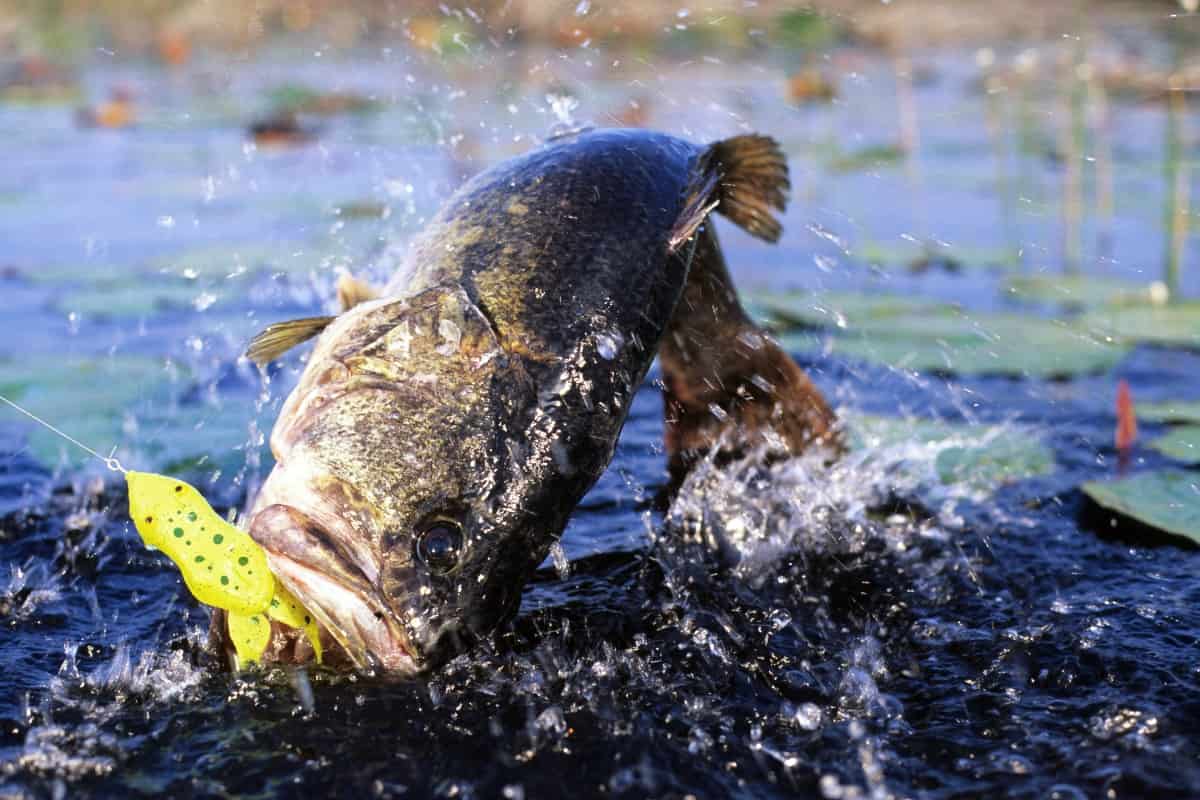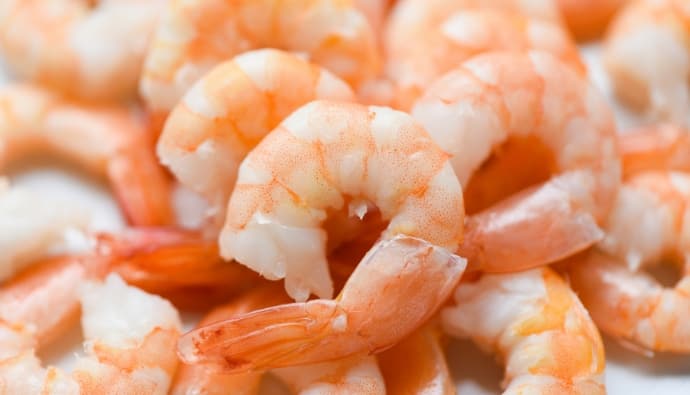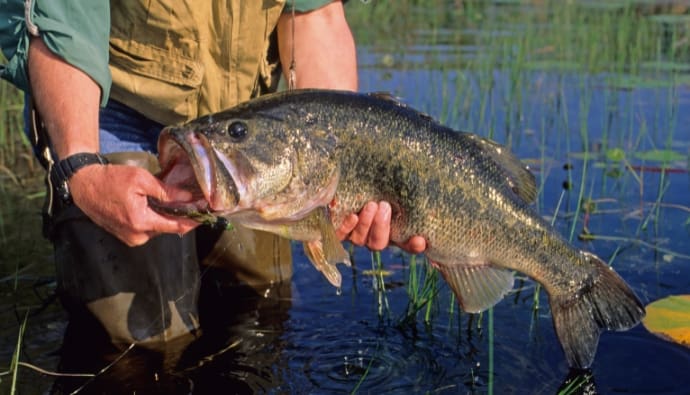Are you wondering what do bass eat? There are many species of bass, including largemouth, smallmouth, black bass, and spotted bass to name a few. Each of them has their unique diet, however, they all eat a variety of smaller fish, insects, and aquatic animals such as frogs. In this guide, we’ll share with you what the common bass species eat.

Water quality plays a large role in what baits the different bass species will favor. For example, in clear water, you can expect them to eat smaller prey, such as minnows and insects. When muddy water is muddy, they eat larger animals, such as frogs and crayfish.
The different seasons bring about a change in their behavior as well. In the spring, it’s common to see bass go after smaller animals, such as minnows and insects. During summer, when it’s warm out, they will go after larger fish, frogs, crayfish, and insects since there’s more activity.
When it starts to cool down in the fall, the bass can start eating more crayfish and crustaceans as they prepare to slow down their metabolism and the cold water ahead. When the water gets cold, they tend to go into a more hibernating state, reduce their eating, and slow their metabolism.
The Short Answer
Bass are opportunistic feeders and will eat what’s readily available to them. This will include fish, insects, and other aquatic animals. Their diet changes with their age and environmental conditions. Not to mention the availability of their food choices. To increase your chances of catching bass, observing the different factors and presenting baits that mimic those conditions is important.
The Long Answer
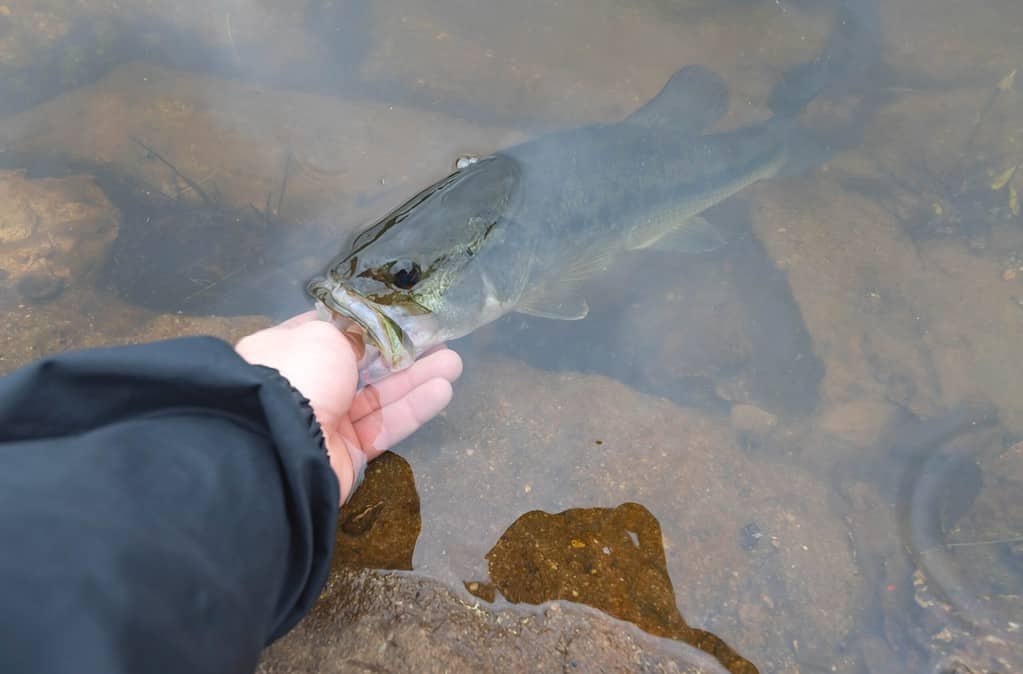
Since bass are opportunistic feeders, they will attack whatever crosses their path. I’ve personally seen bass take massive lures while fishing so as long as they think the bait can fit in their mouth, they seem to feel comfortable attacking it.
When discussing bass diet, it’s important to distinguish between what they eat in the wild and what fishermen try to mimic to elicit a bite while fishing.
For example, knowing that bass like sunfish, an angler could catch some bluegills and fly line it and wait for a bite. However, since it’s more sporting to use artificial lures, they might opt for a jig or spinnerbait to get the same predatory reaction from the fish, even though the lure doesn’t quite mimic the actual look of the baitfish.
Let’s look deeper at the 3 most common bass species and what they like to eat in the wild and what works from an artificial standpoint.
Largemouth Bass Diet
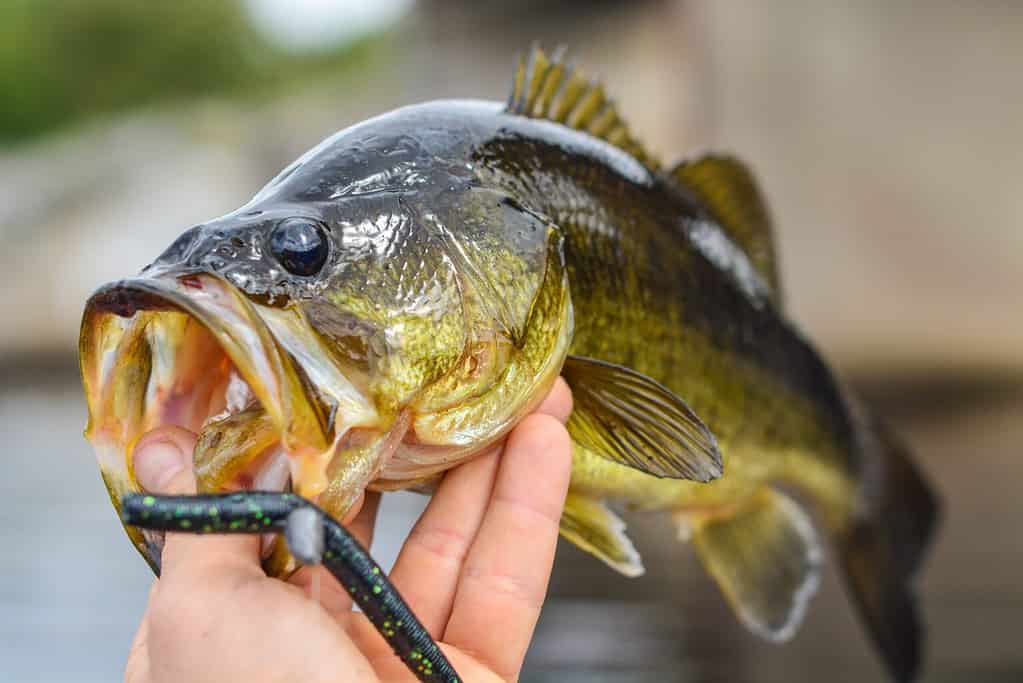
The largemouth bass diet consists of minnows, shad, sunfish like bluegill, frogs, mice, crayfish, and whatever else they can get their mouths around after ambushing.
A few artificial baits worth considering are crankbaits, jigs, spinnerbaits, soft plastics, and topwater baits. Our personal favorites include senkos on a wacky rig, drop shot, or texas rig.
Smallmouth Bass Diet
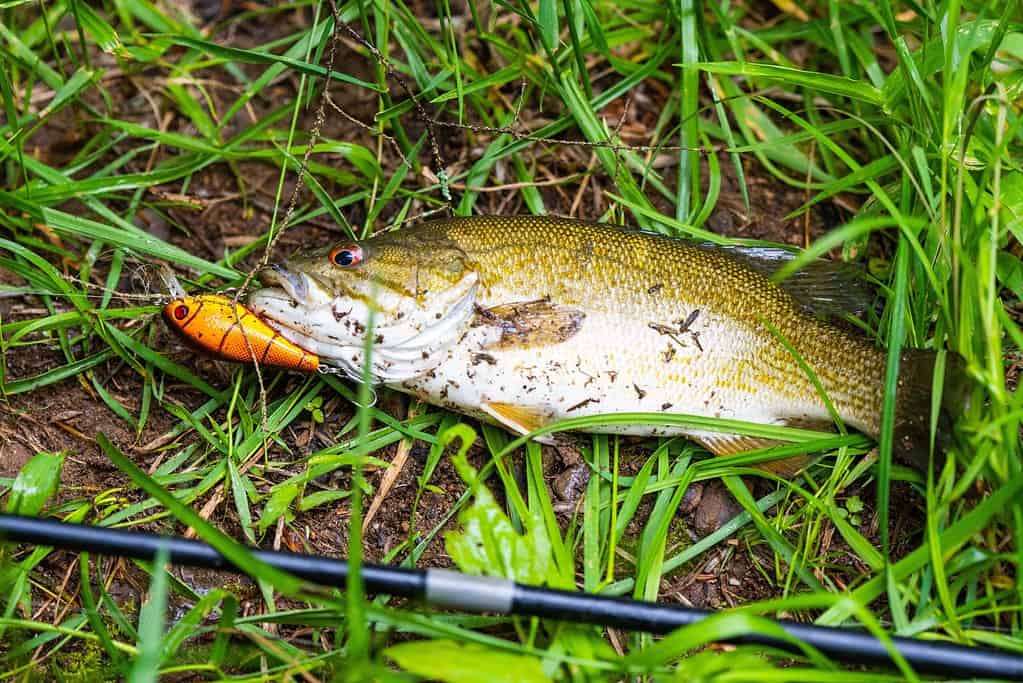
The smallmouth bass diet consists of minnows, crayfish, hellgrammites, leeches, and other small aquatic creatures.
A few artificials worth considering are crankbaits, jigs, spinnerbaits, soft plastics, and topwater baits.
Spotted Bass Diet (Kentucky Bass)
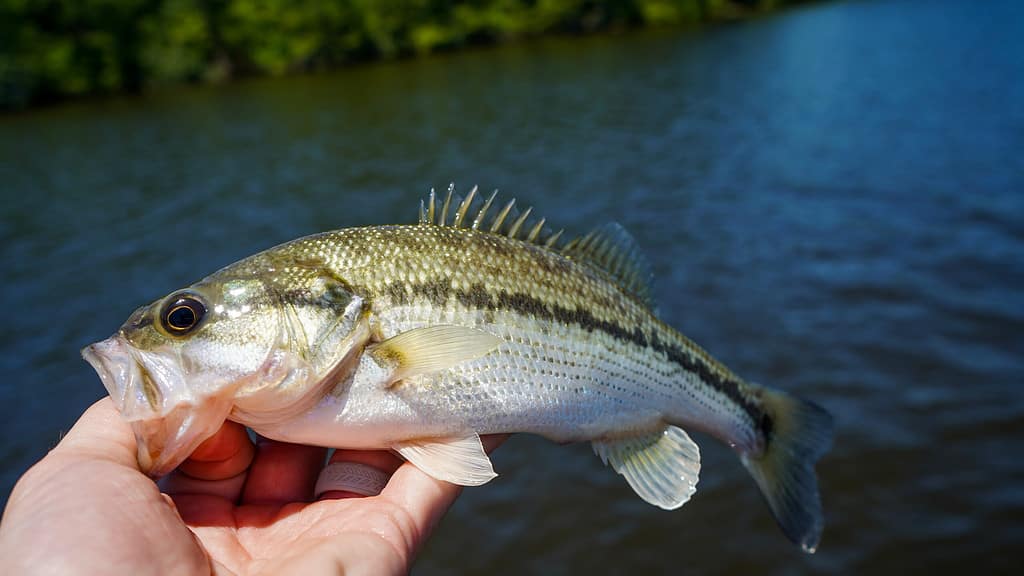
The spotted bass diet comprises small fish like minnows, shad, and sunfish. They are also known to go after crayfish if their present in the water.
For lures, try the same as you would for either a largemouth or smallmouth bass.
Habitat Diet Influence
Did you know that bass are ectotherms? This means that their body temperature is regulated by the sounding water temps. That means if the water is cold their metabolism lowers and vice versa. Therefore, if you want a more active bit, look for warmer water.
Since bass are ambush predators that means they like structure to hide and wait for the moment to strike an unsuspecting fish. This could be rocks, grasses, and logs that give them a place to hide. Habitat dictates what bait types and quantities are around. Bass will adapt to whatever is present.
Bass Age Diet Influence
The age of the bass is another factor that greatly influences the bass feeding habits. One of the determinants of the bass’ age is their size and weight. Most bass shifts their diet as soon as they grow about 6 inches.
Young Bass
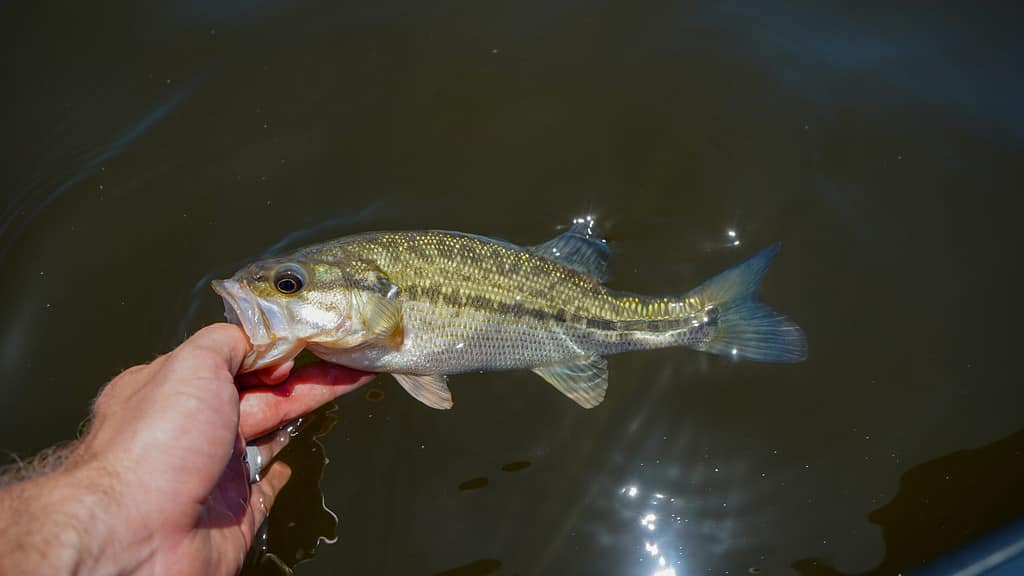
The baby bass is also known as the fingerlings or the fry. Their diet is specialized depending on their size. Since they are small, they also feed on smaller fish and other species like tadpoles, minnows, insect larvae, zooplankton, and most aquatic insects.
Older Bass
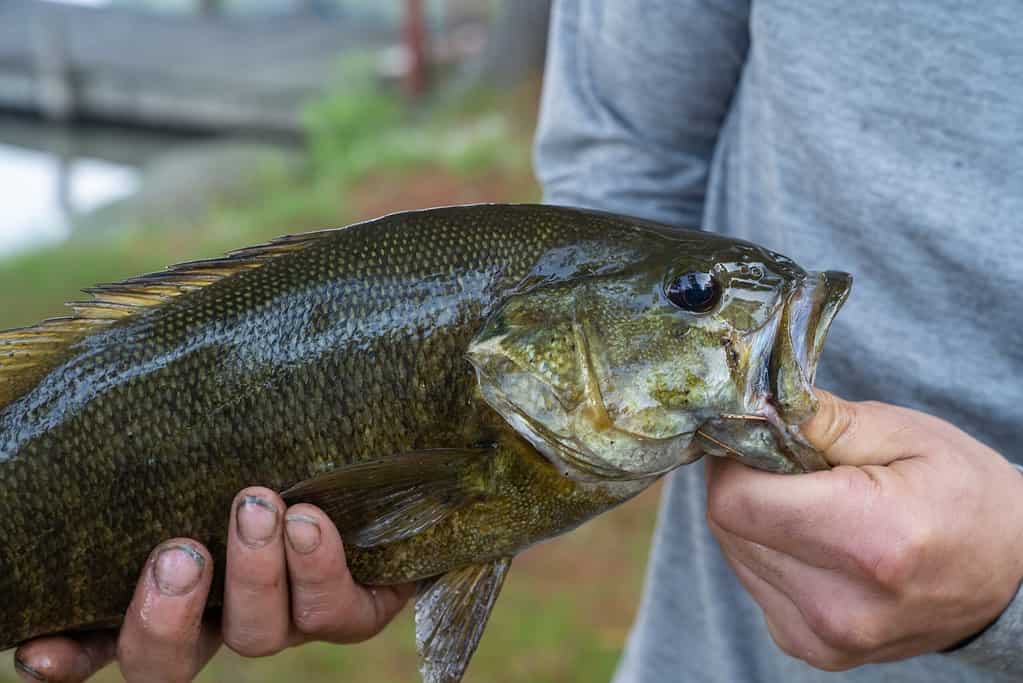
The big bass feed on prey fish of a substantial size, like the catfish family, spotted bass, striped bass, and even small aquatic birds and baby ducks. Larger bass
Bass Season Diet Influence
The changes in water temperatures also affect the feeding behavior of bass species. As an angler, being familiar with how the season changes their feeding habits helps you ensure that you are at the right time to not waste time and effort.
Spring & Summer
Expect to see the bass species in shallow rocky areas during these seasons. Sometimes, they find their prey in shallow vegetative areas as long as the water level is only between 5 to 15 feet.
One of the main reasons behind it is spawning. Their eggs need to stay in warm areas with sunlight for them to hatch. This is also the season when most of their prey stays in shallow water.
Fall & Winter
In colder months of fall and winter, expect they’ll have a slower metabolism. They will tend to eat during the day when the water is warmer and when the bait fish and insects are on the move. As soon as the water temperature drops to 41 degrees F (5°C), they will stop eating, and it is when they release their eggs, known as spawning.
Like reptiles and other mammals, they enter a semi-hibernation state until the warm season returns. Before the fall and winter seasons, they will start to eat less, and sluggishness in their movement may be observed.
Recommended Baits for Bass
There may be a wide variety of prey bass eats, but here are the common baits given to them to ensure victory.
Senkos
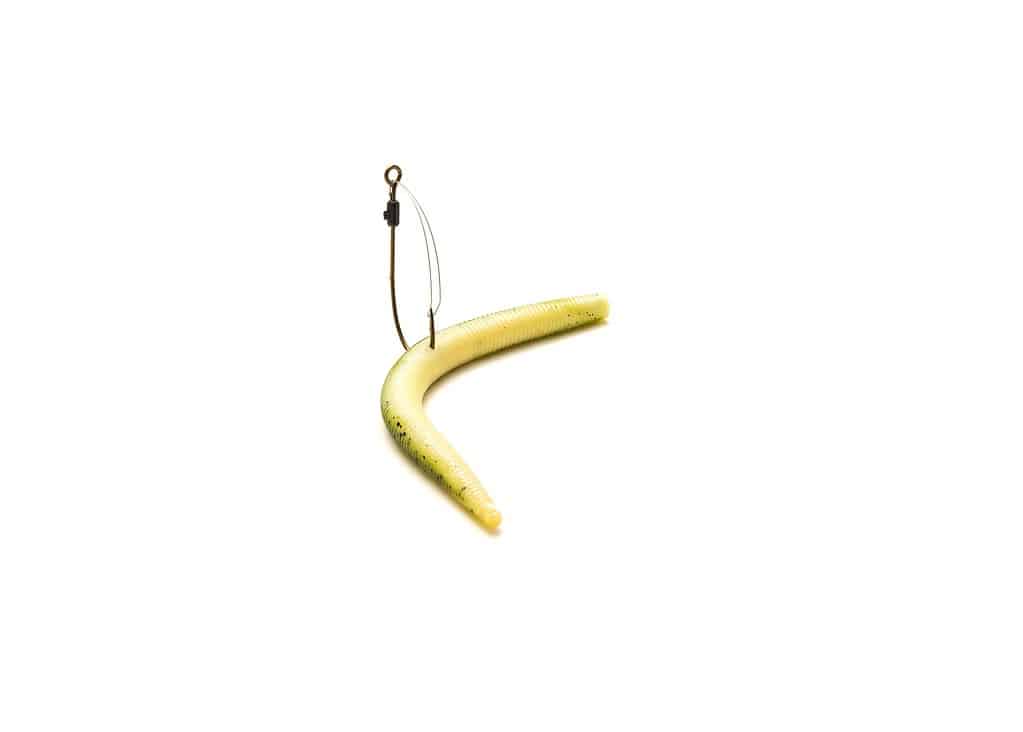
It’s hard to argue with the effectiveness of senkos. You can rig them a bunch of different ways include Texas Rigs, Wacky Rigs, Carolina Rigs, and Dropshot. They have amazing presentation and color which drive the bass crazy. My personal favorite is the watermelon color.
Bluegills (Live Bait)
Sunfish such as bluegills are one of my favorite ways to catch bass. I like to use a small hook with a tiny piece of shrimp to catch the bluegill, then fly line it on a larger hook into the structure and wait for the bass to attack.
Frogs
Frogs are one of my favorite topwater baits. Since the frog’s body hides the hooks, you can cast them into the thick topwater vegetation to pop your lure to imitate the hopping of the frog. The bass will sense the movement, and since they are hiding underneath, they will time it just right to blow up your bait and sometimes jump fully out of the water. I like to use this during the spring and summer to fish the shallows, weed beds, and ponds.
Bass Rigs
It’s hard to compete with the various bass rigs out there. The dropshot is great when the bass are stubborn. I like to use an ultralight setup and slowly drag the bait along the bottom with a little action to hopefully get them to strike. If you’re fishing weedy areas, try the Texas Rig to reduce your snags. Senkos are a great option, but sometimes having the curly tail on a worm has just a bit more action to get a strike. Ned rigs are popular now, but I haven’t had a chance to use it much to have a verdict.
Final Thoughts
Bass are not picky eaters and, therefore, shouldn’t be thought of as difficult fish to catch if you use traditional life bait. However, since bass fishing is more of a sport using artificial lures, then the skill of the angler and their ability to present the bait is the limiting factor for getting bites.



 Facebook
Facebook YouTube
YouTube
